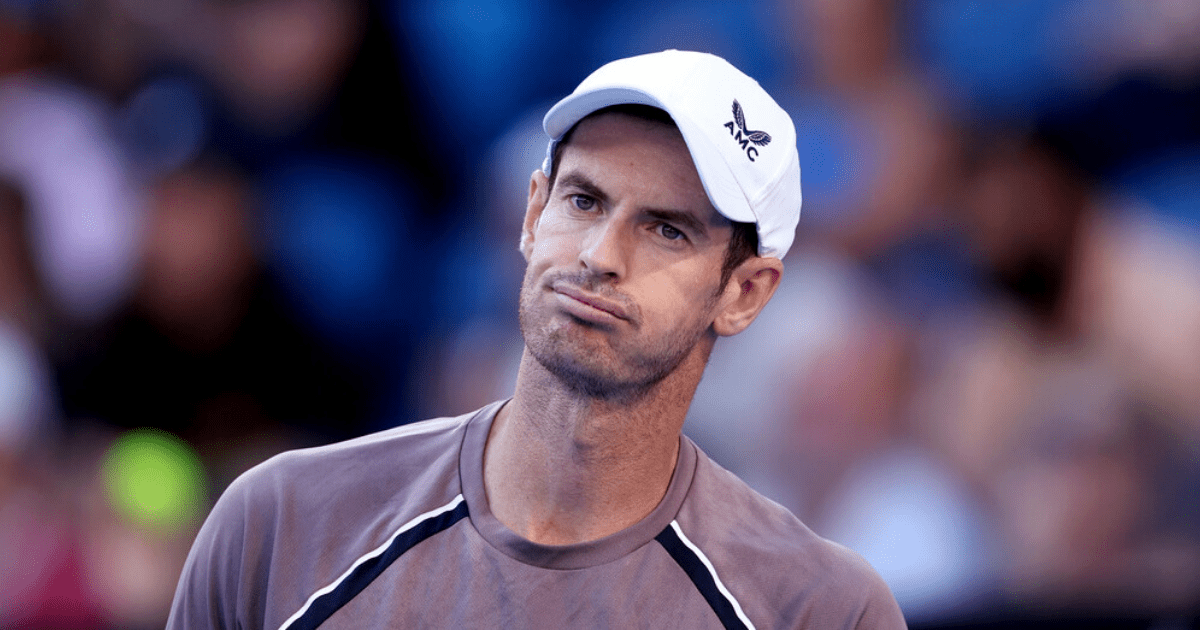Andy Murray's early exit
Former champion Andy Murray has crashed out of the Australian Open in the first round, marking only the second time in 16 years that he has suffered such a defeat. The loss dashed hopes of a potential third-round showdown with Novak Djokovic.
A far cry from his glory days
Murray, a five-time finalist at the Australian Open, was outplayed by 30th seed Tomas Martin Etcheverry in a straight-sets loss. The lacklustre performance was a far cry from Murray's previous successes at the tournament.
Possible final match at Australian Open
With this defeat, speculation is growing that Murray may have played his final match at the Australian Open. The 36-year-old has previously hinted at retirement, and this low-key exit could potentially signal the end of his career in Melbourne.
A string of defeats
Murray's loss in the first round is his fourth consecutive defeat dating back to October. He has now lost seven of his last eight matches, marking the worst run of his career. The Brit's struggles on the court continue to mount.

A tough match for Etcheverry
Murray's opponent, Tomas Martin Etcheverry, described the match as "incredible" and acknowledged the difficulty of playing against a legend like Murray. The 24-year-old hopes to maintain his level of play in the next round.
This is a developing story. Stay tuned for more updates.
Frequently Asked Questions
Can someone start playing tennis late and still become a professional?
It is possible to play tennis professionally at an older age, even though it may be more difficult. Success will depend on the individual’s athletic ability, work ethic, dedication, and access to quality coaching and competition. Late starters must engage in intensive, highly-focused training. While the path is likely to be longer, with talent, perseverance and dedication, achieving a professional standard is possible.
How important are junior tennis tournaments in a career of professional tennis?
Competing in junior tournaments is a crucial step in the journey to a professional tennis career. These tournaments give young athletes the chance to compete against peers, gain valuable experience in matches, and learn how to deal with the mental demands of competitive play. Junior tournaments provide a good stepping stone for players to move up to higher levels of competition. They also have an impact on their ranking, their visibility in front of coaches and sponsors, as well as the overall development they make as athletes.
How important is nutrition to becoming an elite tennis competitor?
Tennis players are not exempt from the importance of nutrition and diet. A proper diet is essential for intense training, as it helps to provide energy, promotes recovery, and reduces injury risk. Diets for elite athletes usually include a mix of carbohydrates with proteins and fats. They also contain essential vitamins. A good fluid balance will help you avoid fatigue and keep your concentration high during the game.
How can a tennis player balance school and intense training requirements?
Balancing academic responsibilities and intense training schedules is a significant challenge for aspiring tennis players. This involves excellent time management and prioritization. It also requires creative scheduling. Flexible academic programs and online schooling can accommodate the busy training and traveling schedules of young athletes. Support from family, coaches, and educational institutions also plays a crucial role in ensuring players can pursue their athletic ambitions without compromising their education.
What is the daily training regimen of a top player in tennis?
Tennis players who are at the top of their game have a rigorous daily regimen that is meticulously planned. The daily training regimen of a top tennis player is rigorous and meticulously structured. It includes many hours spent on the court, with a focus on technical drills. Aside from fitness training, players also engage in flexibility and recovery sessions, including stretching, massage or physiotherapy. Proper nutrition and psychological coaching are also integral components, ensuring athletes maintain peak performance both physically and mentally.
Statistics
- Strength and conditioning coaches emphasize core strength, noting that an increase in core stability can improve shot accuracy by up to 43%.
- Nutritionists report that a tennis player’s diet should consist of about 55-60% carbohydrates, 15-20% protein, and 20-25% fats during intense training periods.
- Persistent mental training and sports psychology can help reduce performance anxiety by up to 60%, according to sports psychologists working with elite athletes.
- Approximately 70% of a professional tennis player’s training time is devoted to developing technique and on-court strategies.
- Statistical trends indicate that top tennis players usually have at least 5 people in their support team, including coaches, fitness trainers, and physiotherapists.
External Links
myprocoach.net
optimumtennis.net
wilsontennis.com
tennisfitness.com
tenniscompanion.org
How To
How to Maximize Your Tennis Training Schedule
Optimizing your tennis training schedule requires a careful balance of on-court practice, fitness training, match play, and rest. Assign blocks of training time to improve your technical skills such as groundstrokes. Serves and volleys. Also, develop a tactical understanding by using situation drills. Build a strong fitness base by including sessions on speed, strength and endurance each week. To practice your skills, schedule a match at least once a weekly. Rest days are necessary to recover after training sessions that have been particularly intense or during match play. You should also review your schedule and make changes based on your progress to ensure that you are always improving.
Did you miss our previous article…
https://www.sportingexcitement.com/tennis/emma-raducanu-reveals-unusual-rehab-method-for-injury-woes/

